Housed in a beautiful Victorian building at The Shore in Leith, Heron has, perhaps, the most enviable location of all the plethora of eateries there. On a prominent slope, at the junction of Henderson Street and Sandport Place, it overlooks the Water of Leith, with views down to the old docks.
As restaurant manager Glen commented, developments in Leith continue to have real momentum with the openings of distilleries, bakeries, wine and cocktail bars alongside the Michelin starred and other fine restaurants. The projected arrival of the tramline by 2023 will attract even more interest in the area.
Originally conceived in January and opened at breakneck speed in July 2021, it is the first joint restaurant venture of chefs Tomas Gormley and Sam Yorke. The minimalist interior has an uncluttered look with stripped pine floors, pine effect tables and Venetian blinds. The high ceiling in Japanese seaweed, grey walls, and pendant lighting are attractive but indicate a work in progress. Their Tables are arranged on two levels and there is a large concrete bar.
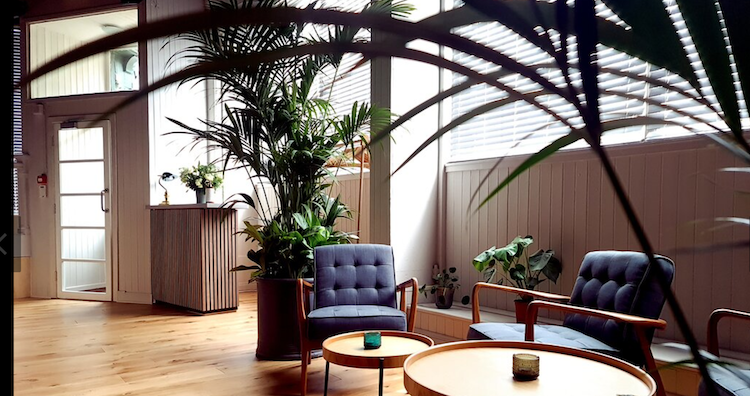
A mixed clientele includes the young, curious locals, those who were clients of Bad Seeds, the chefs’ home dining venture in the lockdown, and industry friends from other restaurants and hotels.
The restaurant aims to serve “farm to table” dishes with ingredients sourced from well known local suppliers. These include Grieson Organic, Phantassie Organic Farm and The Free Company
Both classical and contemporary methods are used in the kitchen, reflecting the relative experience of the two young, yet highly trained chefs. Meat, game and fish dishes are accurately timed both in cooking and resting, maximising their flavour and texture. Dishes look simple in their clean and often beautiful presentation but are often multi-layered and complex. Ingredients are judiciously combined, being balanced in their tastes, textures and temperatures. Invention is moderated by a shrewd gastronomic sense, leading to surprising yet enjoyable results.
Prices compare favourably with similar establishments being fair and realistic given the quality of the ingredients and the skill in cooking. On a late summer menu, four starters were priced from £9 to £15; four mains from £20 to £34; and three desserts, all at £9. The limited choice allows the current two chefs to focus on producing every plate to perfection.
The menu changes every few weeks and reflects the best seasonal produce. In the current fashion, descriptions merely list the main ingredients of each dish with no indication of cooking methods. However, the front of house staff team is well informed and have no difficulty answering guests’ questions.
Fine Dining Guide visited on a weekday evening in late September and found much to admire in the food, wine, service and ambience.
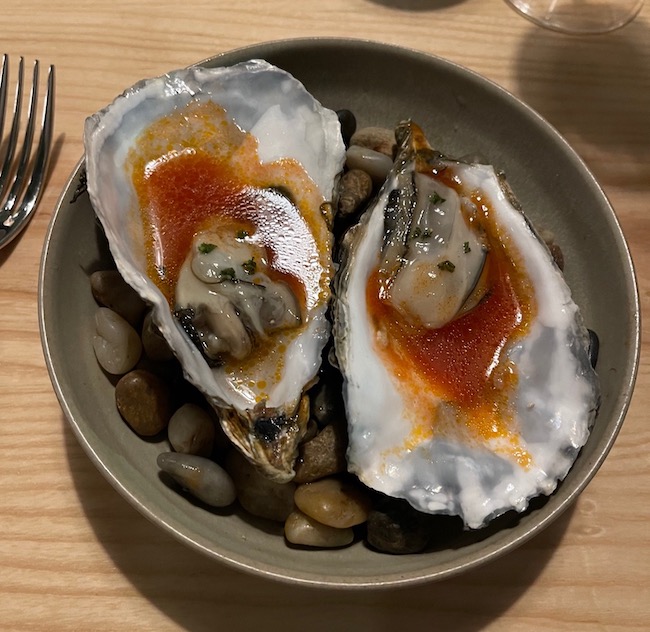
An amuse-bouche of two Lindisfarne oysters, their essential briny taste enlivened by a dressing of smoky but not overwhelming Mescal, spicy oregano giving a peppery heat, and a drizzle of gazpacho and lime for sweetness and acidity.
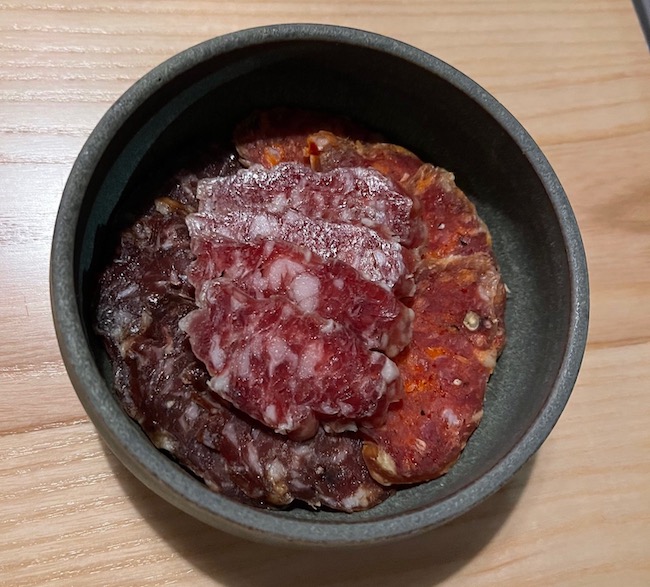
Another amuse comprised a generous bowl of three types of East Coast charcuterie: rich robust saucisson sec, aged and dry salami Picante, and a fragrant Tartufo with truffle and porcini.
Whipped butter with brown crab meat accompanied a small sourdough loaf with a crisp crust and tangy crumb.
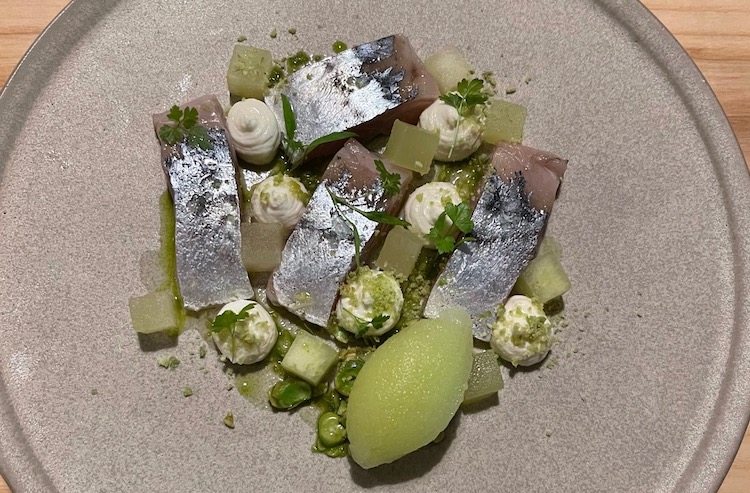
A starter of mackerel cured in rice wine and Mirin delighted in its lively freshness. This oily fish was balanced by compressed apple cubes and apple sorbet giving sweetness and acidity, and horseradish cream and wasabi crumb giving a background heat. In colours of silver, green and white, this was a brilliantly conceived and visually stunning dish.Wine: Riesling Federspiel, Weingut Prager, 2017

Another starter of veal sweetbreads was accurately pan roasted to produce a caramelised crust and soft, creamy flesh. Garnished with wood sorrel, these delectable morsels of offal rested on a bed of earthy, silky-smooth celeriac puree. Garnished with girolle mushrooms the dish was finished with an intense veal jus. This rich, luxurious, almost decadent dish, classically executed, has proved extremely popular. Wine: St Joseph Blanc, Selection d J S Chase, 2014
Our two main courses came with side dishes
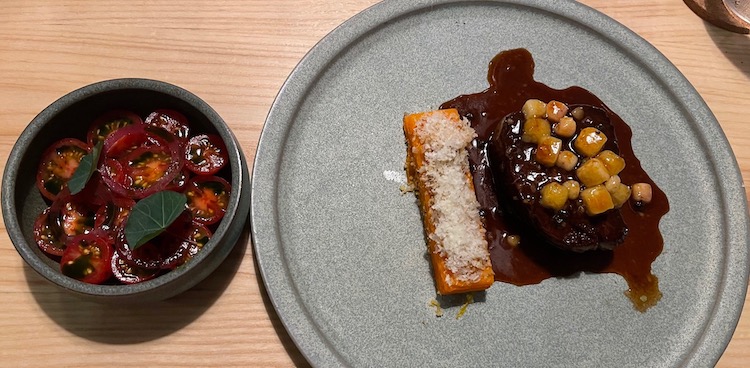
Classical cooking was also evident in the first main course. A flavoursome sirloin steak was cooked medium rare and dressed in a deep, glossy Bordelaise sauce. Cubes of bone marrow and Parmesan cubes added richness and a moderate salty crunch. An innovative carrot dauphinoise was also topped with the same crumb. Freshness and a foil the richness was given by a side salad of Isle of Wight tomatoes, basil oil and red onion. Wine: Saintayme St Emilion, Grand Cru 2014
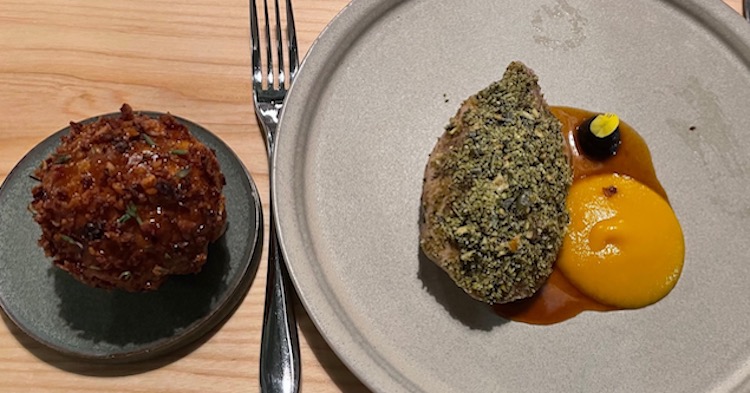
A breast of partridge was precisely cooked and rested to optimise its moist flesh and mild gamey flavour. Topped with pumpkin seed and sage crumb to give texture, and stuffed with its leg meat, foie gras, oats and smoked raisins to give an added surprise, this complex dish was dressed with a smooth, sweet pumpkin puree and a piquant Barberry sauce. Served on the side was a freshly baked brioche stuffed with a parfait of the bird’s liver and topped with pancetta and thyme. This tour de force of game cookery impressed on all fronts: the initial concept; the timing and attention to detail; and the simple, clean presentation of a complex, multi layered dish. Wine: Savigny Les Beaune Premier Cru, Domaine Savigny 2008
Desserts, often the Achilles Heel of fine dining establishments, did not disappoint in maintaining the high standards of conception and execution.
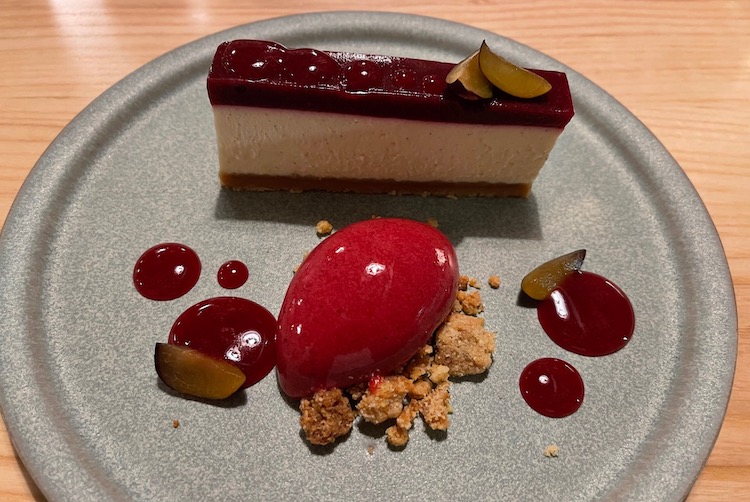
An impressive autumnal dish showcased the humble damson in three ways: a light creamy glazed cheesecake; a velvety smooth and intensely flavoured sorbet on crushed shortcake; and a damson gel.
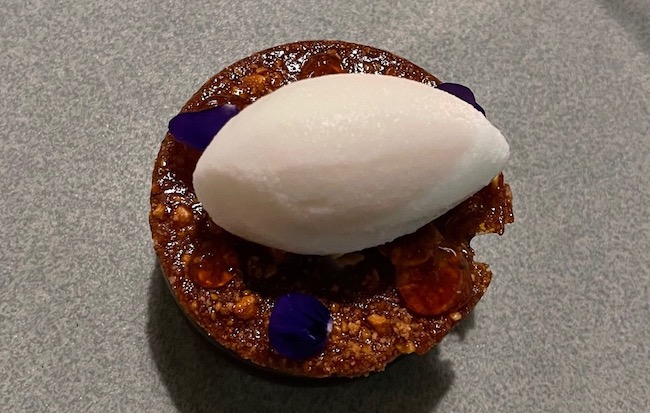
Equally accomplished was the chocolate delice: a mousse of dark chocolate came with a peanut financier, caramel jelly, topped with an exemplary peanut brittle and a quenelle of silky buttermilk sorbet, the gentle sourness of which balanced the richness of the sweeter elements.
Good coffee ended a memorable meal, one enhanced by the welcoming, seamless service under the direction of restaurant manager Glen Montgomery, whose distinguished CV includes Restaurant Andrew Fairlie and the Balmoral Hotel. With a career also as a sommelier, he was able to match wines to dishes with consummate ease as well as describing the wine and dishes in meticulous detail. His professional yet unstuffy approach contributed to the relaxed ambience room of the dining room.
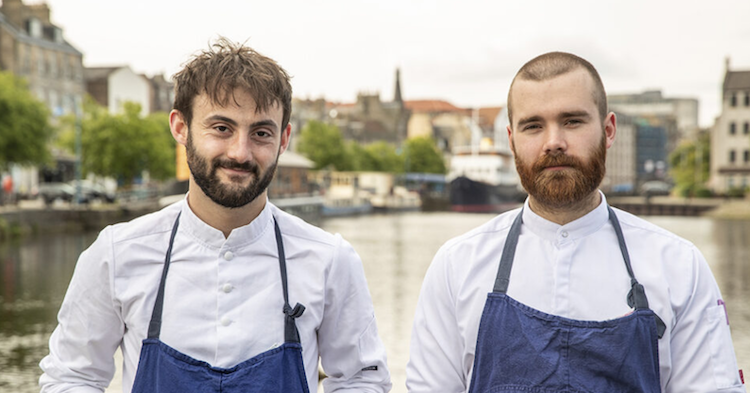
Fine Dining Guide had an opportunity to speak to the chefs. Both have impressive pedigrees: Tomas Gormley (26) was head chef at The Lookout by Gardener’s Cottage, after working at Edinburgh’s 21212 and Le Roi Fou, and before that Restaurant Andrew Fairlie at Gleneagles; Sam Yorke (23) worked under chef Dominic Jack at the now closed Castle Terrace Restaurant, then transferred to Tom Kitchin’s Bonnie Badger in Gullane.
Describe the journey from ‘Bad Seeds’ lockdown fine dining takeaway to Heron
Their first meeting to discuss the idea was on January 8th. They continued with Bed Seeds until 8th March, then work on the Heron site progressed from March to July. With the help of those of Sam’s family, who were in the relevant trades, Heron opened on 15th July. The pace was clearly fast, with further developments in store. With a current capacity of 40 covers, there are plans for dining in the lower area and casual dining at the bar, increasing the number to 50. The arrival of a third chef in the last two weeks will facilitate this and help extend and fine tune the offering. Both chefs commented on how well their restaurant has been received, adding there is room for all types of eateries to co-exist happily in the area.
How do you combine use of artisan suppliers and organic producers with fine dining consistency?
Failures by suppliers could neither be predicted nor planned for. Fortunately, most of their suppliers have been reliable. As they try to change or adapt the menu frequently, continued dependence on the same suppliers does not happen. There have been no major problems since opening.
Do you have any signature dishes?
The sweetbread with celeriac puree starter has been on the menu since opening so could be considered a signature dish. Of the main courses, lobster tail with ginger and chilli ravioli, now off the menu, was also popular. Currently, the partridge dish has proved a winner.
As joint chefs, how are any differences in approach or concept reconciled?
As joint chefs it may take some time to settle on a dish. However, they tend to agree on most things but like to bounce ideas off each other.
What can you take from your relative backgrounds?
Both spent lot of time in classical French led kitchens as reflected in their current repertoire. Sam worked under a head chef who was more strictly classical, old school with discipline, structure and organisation. In similar fashion, Tomas devleoped his skills with Andrew Fairlie, while considering himself as more experimental.
What is your view of social media?
Tomas is the expert here. The coverage has been most encouraging so far.
What is your ultimate ideal for this restaurant?
The aim is to busy every night!



